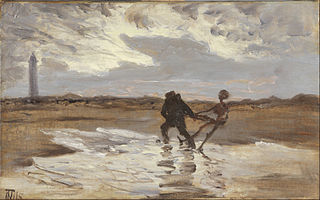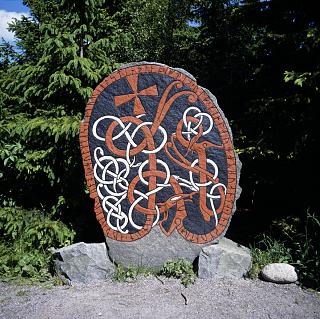 W
WDanish folklore consists of folk tales, legends, songs, music, dancing, popular beliefs and traditions communicated by the inhabitants of towns and villages across the country, often passed on from generation to generation by word of mouth. As in neighbouring countries, interest in folklore grew with an emerging feeling of national consciousness in 19th century Denmark. Researchers travelled across the country collecting innumerable folktales, songs and sayings while observing traditional dress in the various regions. Folklore today is part of the national heritage, represented in particular by national and local traditions, songs, folk dances and literature.
 W
WAgnete og Havmanden (Danish) or Agneta och havsmannen (Swedish) is a ballad. It is also found in Norway and as a prose folktale published by Just Mathias Thiele in his 1818 Danske Folkesagn, though Thomas Bredsdorff has argued that this prose version is of literary rather than folkloric origin. The ballad too is generally thought to be relatively late in its composition, perhaps from the eighteenth century.
 W
WAmleth is a figure in a medieval Scandinavian legend, the direct inspiration of the character of Prince Hamlet, the hero of William Shakespeare's tragedy Hamlet, Prince of Denmark.
 W
WHans Christian Andersen was a Danish author. Although a prolific writer of plays, travelogues, novels, and poems, he is best remembered for his fairy tales.
 W
WA Gjenganger in Scandinavian folklore was a term for a revenant, the spirit or ghost of a deceased from the grave.
 W
WHarpens kraft (Danish) or Harpans kraft, meaning "The Power of the Harp", is the title of a supernatural ballad type, attested in Danish, Swedish, Norwegian, and Icelandic variants.
 W
WThe lindworm or lindwurm was a popular motif found on runestones in 11th-century Sweden. Portrayals vary across countries and the stories in which they appear, the creature generally appearing as wingless with a serpentine body, dragon's head, scaled skin and two clawed forelimbs. Depictions imply lindworms do not walk on their two limbs like a wyvern, but move like a mole lizard: they slither like a snake and use their arms for traction.
 W
W"Little Claus and Big Claus" is a literary fairy tale by Hans Christian Andersen, published in Danish in 1835 in the first instalment of his booklet Fairy Tales Told for Children. First Collection..
 W
WThe Merman's Children is a 1979 fantasy novel by American writer Poul Anderson, inspired by legends of Mermen and Mermaids from Danish folklore, in particular the ballad Agnete og Havmanden. Portions of the work had previously been published as an identically titled novella and the novelette "The Tupilak" in the anthologies Flashing Swords! #1 (1973) and Flashing Swords! #4: Barbarians and Black Magicians (1977). The complete novel was first published by hardcover by Berkley/Putnam in September 1979, which also issued two later editions, a Science Fiction Book Club hardcover edition in February 1980 and a paperback edition in October 1980. The first British editions were issued in 1981 by Sphere Books (paperback) and Sidgwick & Jackson (hardcover). It was also included in the Sidgwick & Jackson omnibus Science Fiction Special 44 in 1983.
 W
WA Molbo story is a Danish folktale about the people of Mols, who live in eastern Jutland near the town of Ebeltoft. In these tales the Molboes are portrayed as a simple folk, who act foolishly while attempting to be wise.
 W
WThe Nixie, Nixy, Nix, Näcken, Nicor, Nokk, or Nokken are humanoid, and often shapeshifting water spirits in Germanic mythology and of folklore.
 W
WA nisse, tomte, tomtenisse, or tonttu is a mythological creature from Nordic folklore today typically associated with the winter solstice and the Christmas season. They are generally described as being short, having a long white beard, and wearing a conical or knit cap in gray, red or some other bright colour. They often have an appearance somewhat similar to that of a garden gnome.
 W
WIn the folklore of Scandinavia, Tycho Brahe days are days judged to be especially unlucky, especially for magical work, and important business transactions. Tycho Brahe (1546–1601) was a Danish astronomer, astrologer, and alchemist and as such achieved some acclaim in popular folklore as a sage and magician.